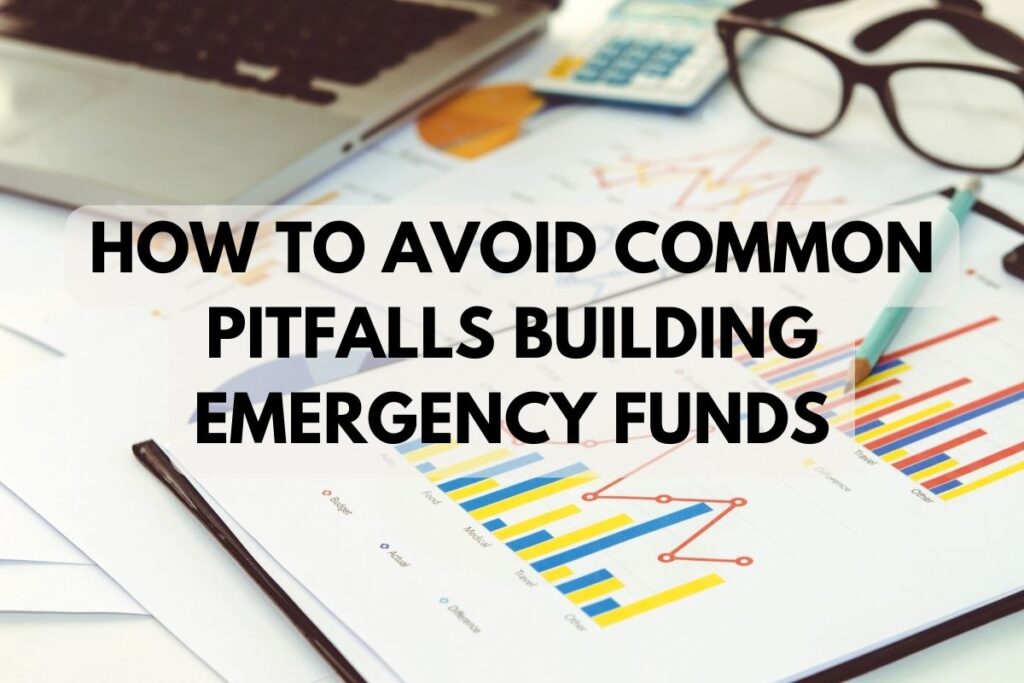
Building an emergency fund is a crucial aspect of financial planning, providing a safety net during unexpected circumstances. However, there are common pitfalls that individuals may encounter when establishing their emergency funds. Steering clear of these mistakes is essential for ensuring the effectiveness of your financial safety net. Here are some common pitfalls to avoid:
1. Delaying the Start:
- Pitfall: Procrastination is a common obstacle. Delaying the start of your emergency fund leaves you vulnerable to unexpected expenses without a financial safety net.
- Solution: Start small if needed, but start today. Consistency is key, and the earlier you begin building your emergency fund, the better protected you’ll be.
2. Setting Unrealistic Goals:
- Pitfall: Establishing overly ambitious savings goals can lead to frustration and may discourage individuals from continuing to save.
- Solution: Set realistic and achievable goals based on your income, expenses, and financial objectives. Gradually increase your savings targets as your financial situation improves.
3. Dipping into the Fund for Non-Emergencies:
- Pitfall: Using the emergency fund for non-emergencies, such as vacations or discretionary spending, weakens its purpose and reduces its effectiveness.
- Solution: Clearly define what constitutes an emergency. Use the fund only for genuine unforeseen circumstances, reinforcing its role as a financial safety net.
4. Neglecting Regular Contributions:
- Pitfall: Irregular or sporadic contributions to the emergency fund hinder its growth and may leave you unprepared for unexpected expenses.
- Solution: Prioritize consistent contributions, even if they are small initially. Set up automatic transfers to ensure a disciplined approach to building your emergency fund.
5. Not Adjusting for Inflation:
- Pitfall: Neglecting to adjust your emergency fund for inflation can result in its real value diminishing over time.
- Solution: Periodically reassess your emergency fund target to account for changes in the cost of living and ensure it remains sufficient to cover potential emergencies.
6. Overlooking Debt Repayment:
- Pitfall: Focusing solely on building the emergency fund while carrying high-interest debt can hinder overall financial progress.
- Solution: Prioritize paying down high-interest debts concurrently with building your emergency fund to achieve a balanced and holistic financial strategy.
7. Relying Solely on Low-Interest Accounts:
- Pitfall: Keeping the entire emergency fund in low-interest accounts may limit its growth potential over time.
- Solution: Consider allocating a portion of your emergency fund to higher-yield, easily accessible accounts or short-term investments to balance liquidity and growth.
8. Forgetting to Reassess:
- Pitfall: Neglecting to reassess and adjust your emergency fund as your financial situation evolves can lead to inadequacy or excess.
- Solution: Regularly review your emergency fund in light of changes in income, expenses, and life circumstances. Adjust the fund size and savings goals accordingly.
9. Ignoring Lifestyle Changes:
- Pitfall: Failing to account for significant lifestyle changes, such as marriage, having children, or purchasing a home, can render your emergency fund inadequate.
- Solution: Update your emergency fund goals when major life changes occur, ensuring it aligns with your current financial needs.
10. Not Seeking Professional Advice:
- Pitfall: Overlooking professional advice may result in suboptimal financial decisions when it comes to building and managing an emergency fund.
- Solution: Consult with a financial advisor to tailor your emergency fund strategy to your specific circumstances and receive personalized guidance.
Conclusion:
Avoiding these common pitfalls is essential for the successful creation and maintenance of an effective emergency fund. By staying proactive, setting realistic goals, and making informed decisions, you can ensure that your financial safety net remains robust and capable of providing the security you need during unexpected circumstances.